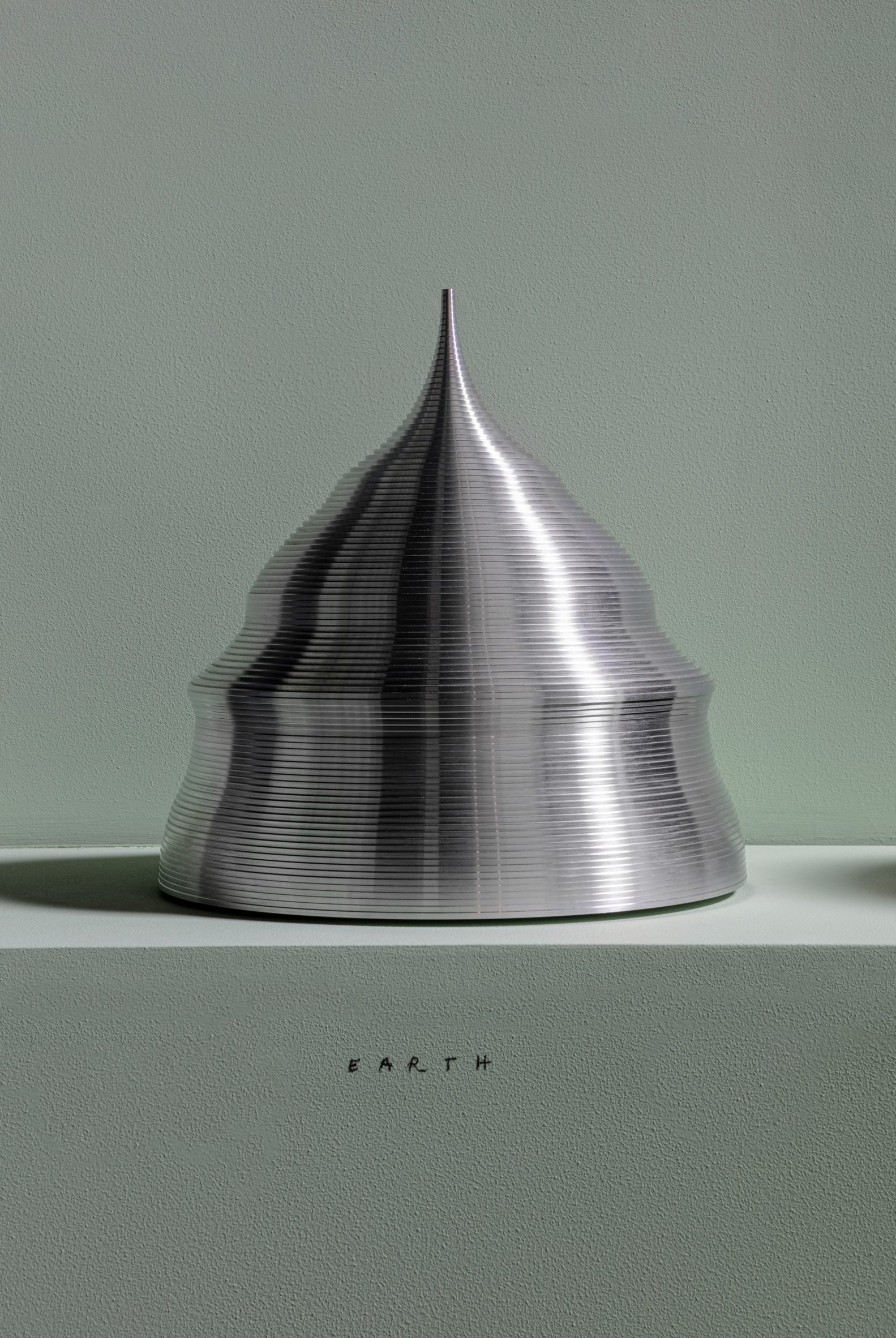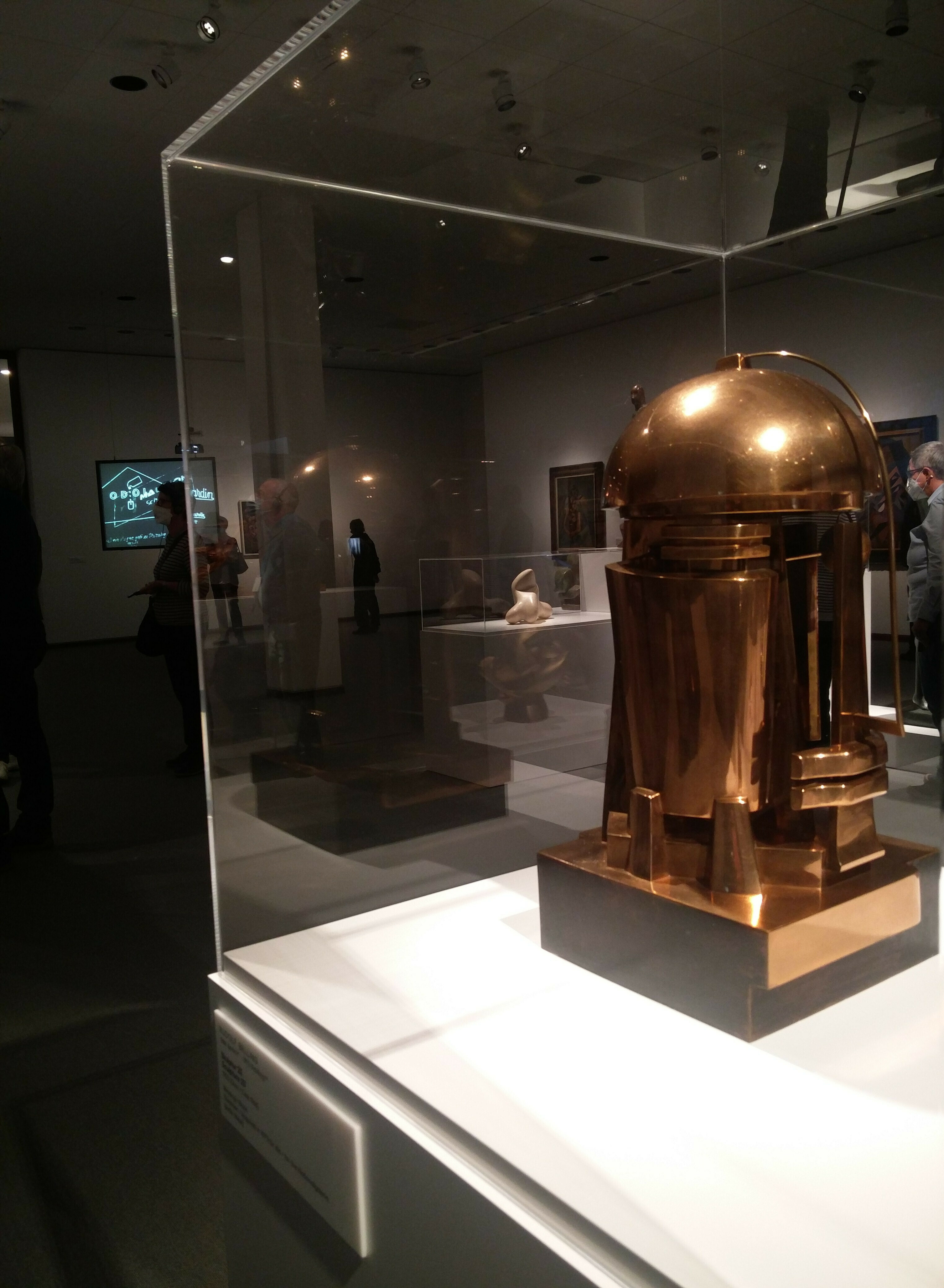

Design collective The Decorators has created three pieces of inflatable furniture that encourage humans and bacteria to intermingle through the process of food fermentation.
The three design sculptures include a 12-person table for making kimchi, a small table for producing labneh cheese and a sofa that can be used for proving the dough for bread.
 The objects encourage humans and bacteria to mix
The objects encourage humans and bacteria to mix
Designers Xavier Llarch Font and Mariana Pestana of The Decorators wanted to highlight the positive role that bacterial microbes can play in human life.
The project builds on the understanding that microbes, such as those cultivated in food fermentation, can improve human digestion. They are also believed to produce feelings of joy through the release of hormones like dopamine and serotonin.
 Cheese-Board is used for making and drying labneh
Cheese-Board is used for making and drying labneh
At a time when Covid-19 has increased public fear of both bacteria and human interaction, Llarch Font and Pestana hoped to use bacteria as a way of forging rather than alienating communities.
"We've been made more aware of how non-human agents such as virus bacteria and microbes impact our lives," said Llarch Font.
"This has dramatically changed the way we interact with each other and our very notion of community."
 Kimchi-Pool allows up to 12 people to communally make kimchee
Kimchi-Pool allows up to 12 people to communally make kimchee
The first piece of inflatable furniture is Kimchi-Pool, a large basin-style table with irregularly-shaped seats around the outside.
A group of up to 12 people can sit or kneel at the table to collectively make kimchee, a Korean food created from seasoned and fermented cabbage and radish napa.
 Sofa-Bread provides space for bread makers to lounge while dough is proving
Sofa-Bread provides space for bread makers to lounge while dough is proving
Cheese-Board provides a surface and drying rack for making labneh, a soft cheese that is traditionally made in Lebanon.
Sofa-Bread is a tiered seat that invites bread makers to lounge while they wait for their bread dough to prove – the process where yeast ferments the dough – before baking.
"We were interested in this idea of domesticity, how these objects become like kitchen utensils," said Llarch Font.
 A performance by artist Laura Wilson was staged on Sofa-Bread
A performance by artist Laura Wilson was staged on Sofa-Bread
The Decorators produced the designs through a fellowship with the Stanley Picker Gallery at Kingston University in southwest London.
The project began in 2018 but naturally took on a new dimension in light of the pandemic – a time when antibacterial hand washes became part of everyday culture, but people also starting experimenting with recipes for making fermented foods at home.
[ 
Read:
"A lot of what we do is about testing public space"– Suzanne O'Connell of The Decorators
](https://www.dezeen.com/2013/01/18/suzanne-oconnell-the-decorators-designed-in-hackney-day-movie/)
The designers hoped to create a reminder that these foods were not always just hobbies to share on social media, but staple foods created through common domestic rituals.
Llarch Font points to the communal kimchee-making that still takes place today, while Pestana recalls how her grandmother would put bread dough above the fireplace.
"It was something that you lived with," she said.
 The designs were exhibited at Stanley Picker Gallery. Photo is by Ellie Laycock
The designs were exhibited at Stanley Picker Gallery. Photo is by Ellie Laycock
All three inflatables have been brought to life through performances.
The kimchee table was used by the Kimjang Project, a spinoff of the Kingston Korea Festival, while the bread sofa was brought to life in a performance by artist Laura Wilson.
The Decorators produced a film to accompany the designs
The Decorators have also produced a film that explains the background behind the project, which was exhibited alongside the designs in an exhibition at Stanley Picker Gallery.
Portal Tables was on show at the Stanley Picker Gallery from 18 November 2021 to 5 February 2022. SeeDezeen Events Guide for an up-to-date list of architecture and design events taking place around the world.
Photography is by Sergio Márquez/The Decorators, unless otherwise indicated.
The post The Decorators create Portal Tables furniture to bring humans and bacteria together appeared first on Dezeen.
#furniture #all #design #videos #inflatables #art #sculptures #designvideos #thedecorators

















 Brooks + Scarpa won a competition to design a Holocaust memorial for the Florida State Capitol
Brooks + Scarpa won a competition to design a Holocaust memorial for the Florida State Capitol The sculpture will have a limestone exterior and a bronze interior
The sculpture will have a limestone exterior and a bronze interior Randomised numbers cut into the bronze will symbolise the tattoos forced on victims
Randomised numbers cut into the bronze will symbolise the tattoos forced on victims
 Visitors will be able to walk through the sculpture
Visitors will be able to walk through the sculpture


 The objects encourage humans and bacteria to mix
The objects encourage humans and bacteria to mix Cheese-Board is used for making and drying labneh
Cheese-Board is used for making and drying labneh Kimchi-Pool allows up to 12 people to communally make kimchee
Kimchi-Pool allows up to 12 people to communally make kimchee Sofa-Bread provides space for bread makers to lounge while dough is proving
Sofa-Bread provides space for bread makers to lounge while dough is proving A performance by artist Laura Wilson was staged on Sofa-Bread
A performance by artist Laura Wilson was staged on Sofa-Bread
 The designs were exhibited at Stanley Picker Gallery. Photo is by Ellie Laycock
The designs were exhibited at Stanley Picker Gallery. Photo is by Ellie Laycock


 Christo's model of The Mastaba, which was intended to be built in the UAE desert. Above and top images of Christo are by Wolfgang Volz
Christo's model of The Mastaba, which was intended to be built in the UAE desert. Above and top images of Christo are by Wolfgang Volz
 One of Christo's sketches for The Mastaba, which the Christo and Jeanne-Claude Foundation is still hoping to build. Photo is by André Grossmann
One of Christo's sketches for The Mastaba, which the Christo and Jeanne-Claude Foundation is still hoping to build. Photo is by André Grossmann
 The Mastaba would be taller and wider than the Great Pyramid of Giza
The Mastaba would be taller and wider than the Great Pyramid of Giza Christo and Jeanne-Claude searching for a site for The Mastaba in the UAE 1982. Photo is by Wolfgang Volz
Christo and Jeanne-Claude searching for a site for The Mastaba in the UAE 1982. Photo is by Wolfgang Volz




 Top: State of the World was exhibited at Design Miami/Basel. Above: the sculptures are based on population data
Top: State of the World was exhibited at Design Miami/Basel. Above: the sculptures are based on population data Lehanneur sourced the data from a UN database
Lehanneur sourced the data from a UN database Each groove represents an age from 1-100
Each groove represents an age from 1-100 A single silver sculpture represents data from the entire planet
A single silver sculpture represents data from the entire planet




